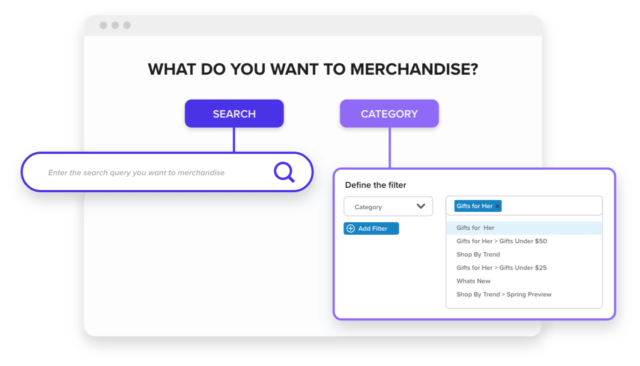When it comes to merchandising an online store, the name of the game is sales.
Sure, we want customers to love our brand and tell all their friends, but first that starts with them buying your wares.
Some might assume merchandising is specific to brick-and-mortar stores, but that’s not true. Merchandising your online store definitely differs to merchandising a physical store, but ultimately it serves the same purpose: sales.
Sales isn’t a big, bad word we should all be afraid of. It’s the cornerstone of the ecommerce industry.
Why merchandising for your online store is important
According to Statista, in 2019 (pre-COVID-19), ecommerce sales surpassed US$3.5 trillion worldwide (US$338 billion in the U.S.). And in June 2020 alone, global etailers recorded 22 billion monthly visits to ecommerce stores.
Meanwhile, McKinsey & Company reports U.S. ecommerce has seen 10 years of growth in three months alone at the start of the pandemic.
This means the competition online is fierce and you need to virtually stand out to get even a sliver of that ecommerce pie.
So, what’s a merchandiser to do?
Merchandising ecommerce sites is how you’ll make an impact with online shoppers. It’s the digital equivalent of the shopping experience and it’s all about how you organize your online store to make it easy for customers (new and returning) to find what they’re looking for (and maybe a few new items they weren’t expecting).
Beyond just the layout
But ecommerce merchandising goes beyond that. It’s all about how items are grouped, filters are presented, promotions, product photography, mobile responsiveness (since we know that pre-COVID, mobile commerce was expected to account for 45% of the total U.S. ecommerce market), and much more.
Shoppers are always interested in the best price for their purchase, but for online shopping, it’s also about the smoothest experience for the customer.
Merchandising for your online store means taking advantage of every piece of data available to you in order to maximize your customers’ experiences with your store. From your product catalog to your website and customer data, you can optimize your conversions (sales). And isn’t that what we all want in the end?

Best practices for merchandising your online store
When merchandising a brick-and-mortar clothing store for example, it’s easy to analyze the foot traffic to determine the best places to put sale items, determine what the mannequins should wear, whether to organize by color or function or item type, etc.
Merchandising online is no different. Some might even argue it’s easier because of all the digital advantages we have. You are no longer limited to only grouping your merchandise in one way; online, you can group them ad infinitum. (This feels like a good place to quote Buzz Lightyear, “To infinity and beyond!”)
Much like brick-and-mortar merchandising, online merchandising requires a deep understanding of your customers so you can create an online shopping experience they can’t get from your competitors.
Here are a few ways for you to learn more about your customers:
- Top search terms: these can provide a wealth of insight into your customers and how they’re looking for items. What words are they using, and are they looking for items consecutively that should be grouped together?
- Heat maps and trackers: these can show you where customers are spending most of their time on a page. This can help you design a better user experience on promotional landing pages as well as product detail pages.
- Personalized recommendations: these are based on aggregate and individual shopper insights, and can upsell customers by understanding past customer behaviors.
- Filters: these can show you how your customers prefer to sort through your products for a better user experience. For instance, if the majority of your customers are sorting by color or price, etc.
- Reviews: these are invaluable to shoppers because humans are more likely to trust other humans than brands. Of course your product descriptions and photography matter, but displaying honest feedback (the good and the not-so-good) will help someone make a decision.

